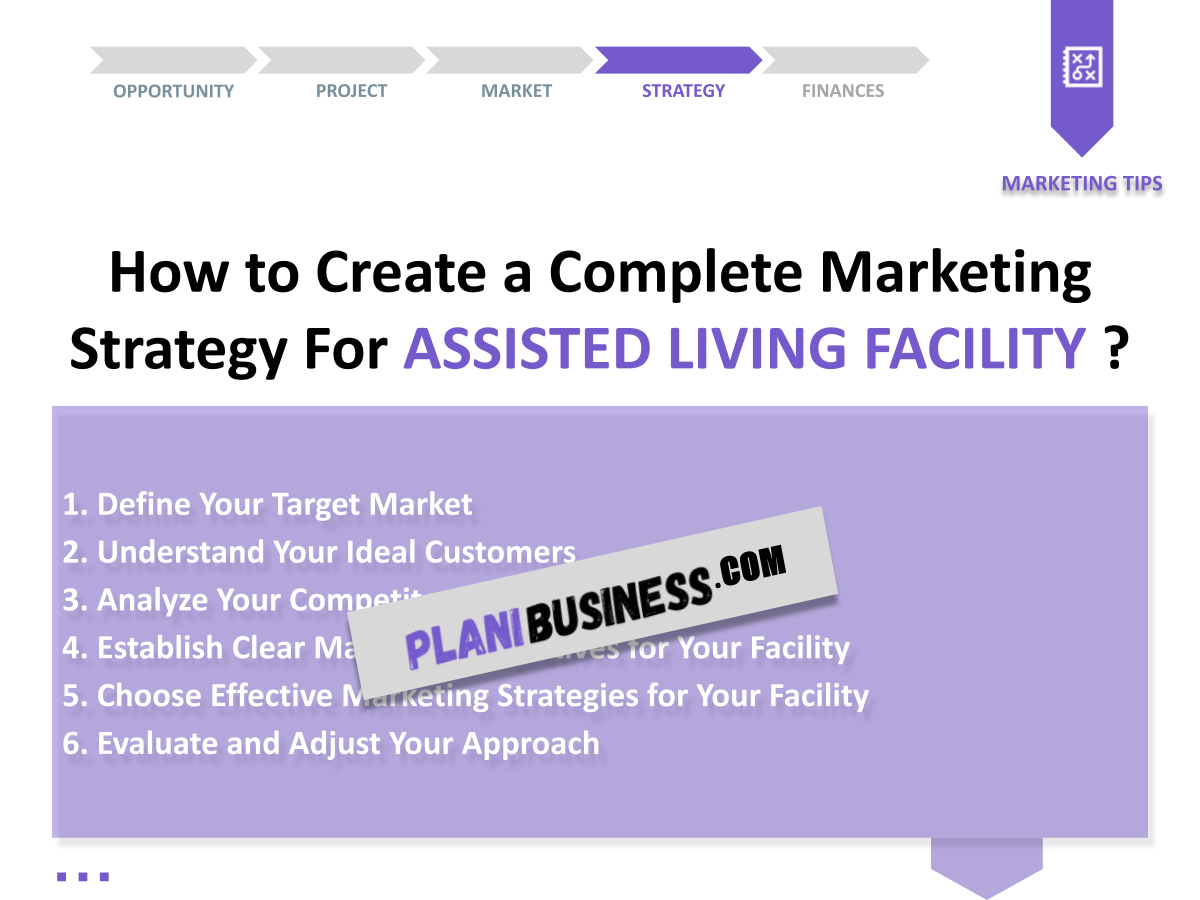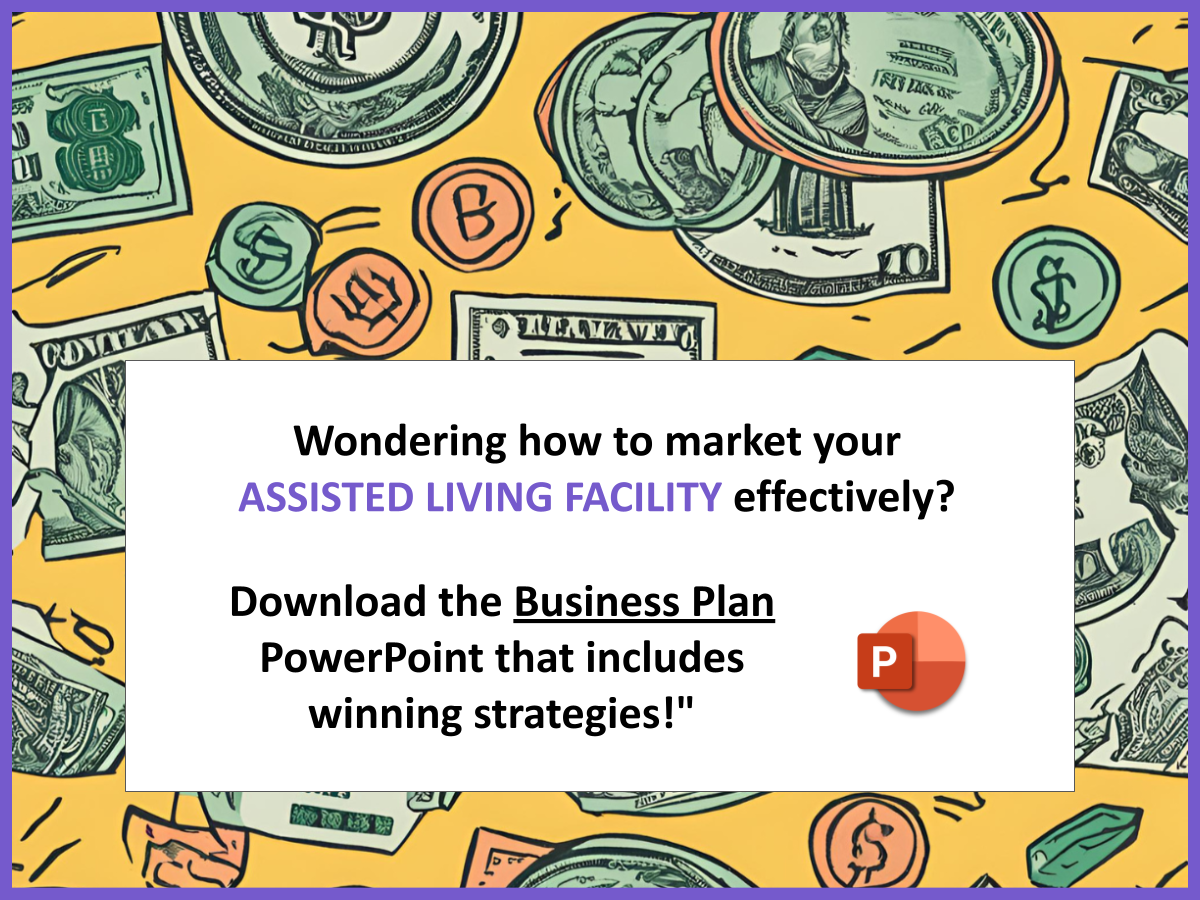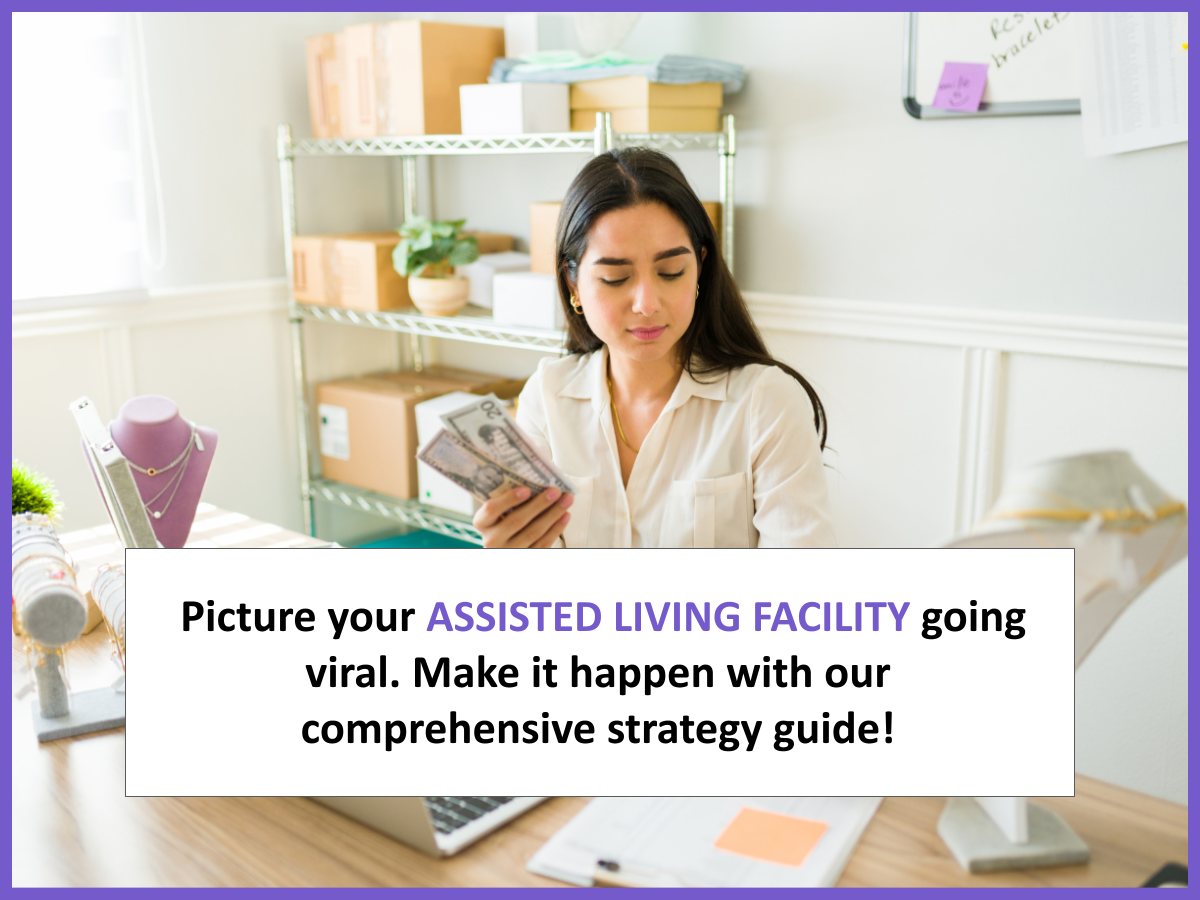Are you aware that nearly 70% of seniors will require long-term care at some point in their lives? This staggering statistic highlights the immense opportunity for assisted living facilities to thrive in a growing market. A well-crafted Assisted Living Facility Marketing Plan is essential for reaching potential residents and their families, ensuring that your facility stands out in a competitive landscape. In this article, we’ll delve into the steps necessary to create an effective marketing plan, including real-world examples and actionable strategies.
1. Define Your Target Market
| Segment | Characteristics | Importance |
|---|---|---|
| Seniors | Age, health status, income | Identifies primary customers |
| Family Members | Age, concerns, decision-makers | Influences facility choice |
Understanding who your target market is will guide your marketing efforts effectively. You should consider demographics like age, health status, and income to tailor your messaging. For example, if your facility is designed for active seniors, emphasize social activities and community engagement in your marketing materials. On the other hand, if your target market includes seniors with specific health needs, your messaging should focus on the quality of care and safety features.
- Tip: Conduct surveys or focus groups with current residents and their families to gain insights into their motivations and concerns.
- Tip: Use online tools like Google Trends to see what seniors and families are searching for in terms of assisted living options.
2. Understand Your Ideal Customers
| Customer Type | Needs | How to Address |
|---|---|---|
| Active Seniors | Social activities, independence | Highlight community events |
| Families | Safety, care quality | Provide testimonials, tours |
Identifying the needs of your ideal customers is crucial. You can enhance your marketing strategy by addressing these needs through targeted content. For instance, create blog posts or videos that showcase the activities available in your facility, such as fitness classes, arts and crafts, or social outings. This will appeal to active seniors looking for a vibrant community.
“People don’t just want a place to live; they want a place to thrive!”
For families, it’s important to provide reassurance about the quality of care their loved ones will receive. Consider hosting open houses where families can tour the facility and meet staff. This personal touch can go a long way in building trust.
- Tip: Use social proof by sharing success stories of current residents on your website and social media platforms.
- Tip: Highlight any awards or recognitions your facility has received to build credibility.
3. Analyze Your Competitors
| Competitor | Strengths | Weaknesses |
|---|---|---|
| Competitor A | Strong online presence | High prices |
| Competitor B | Great customer service | Limited activities |
Researching your competitors helps you identify what they are doing well and where you can improve. This competitive analysis will inform your Assisted Living Facility Marketing Plan and allow you to differentiate your facility in the market. Start by visiting their websites and reviewing their marketing materials to see how they position themselves.
- Tip: Use tools like SEMrush or Ahrefs to analyze competitors’ website traffic and keywords.
- Tip: Follow them on social media to observe their engagement strategies and customer interactions.
When analyzing your competitors, consider the following:
- Identify Unique Selling Points: What makes your facility different? This could be specialized care services, unique amenities, or a strong community focus.
- Assess Marketing Channels: Determine which channels your competitors use effectively—social media, email marketing, or local advertising.
“Knowing your competition is just as important as knowing your customers!”
4. Establish Clear Marketing Objectives for Your Facility
| Objective | Measurement | Timeline |
|---|---|---|
| Increase inquiries by 30% | Website analytics | 6 months |
| Enhance social media engagement | Followers, likes | 3 months |
Setting measurable objectives ensures you can track the success of your marketing efforts. Be specific and realistic to maintain focus. For example, if your goal is to increase inquiries, specify by how much and within what timeframe. This clarity will guide your marketing strategies and keep your team aligned.
- Tip: Use the SMART criteria—make sure your objectives are Specific, Measurable, Achievable, Relevant, and Time-bound.
- Tip: Regularly review and adjust your objectives based on performance data and market changes.
Here are some common marketing objectives for assisted living facilities:
- Increase Brand Awareness: Aim to become a recognized name in your community.
- Boost Occupancy Rates: Set targets for filling vacancies within specific timeframes.
- Improve Resident Satisfaction: Gather feedback and make necessary adjustments to enhance the living experience.
5. Choose Effective Marketing Strategies for Your Facility
| Strategy | Action Items | Expected Outcome |
|---|---|---|
| Content Marketing | Blog posts, newsletters | Educate and attract |
| Social Media Marketing | Regular updates, engagement | Build community |
Implementing the right strategies is key to reaching your target audience effectively. Focus on those that resonate with your market. For instance, content marketing can establish your facility as an authority in senior care. Creating blog posts that address common concerns and questions from potential residents and their families can draw traffic to your website.
- Tip: Share success stories or testimonials from current residents to build credibility and trust.
- Tip: Use email newsletters to keep families informed about events, updates, and helpful resources.
In addition to content marketing, consider these effective strategies:
- Social Media Engagement: Utilize platforms like Facebook and Instagram to share photos, videos, and updates about community events.
- Online Advertising: Invest in targeted ads on social media and Google to reach specific demographics.
- Community Outreach: Host open houses or informational sessions to invite potential residents and families to visit your facility.
“Engagement is key! The more you connect with your audience, the more they will trust you!”
6. Evaluate and Adjust Your Approach
| Evaluation Method | Frequency | Action |
|---|---|---|
| Analytics Review | Monthly | Adjust campaigns |
| Customer Feedback | Quarterly | Implement suggestions |
Regular evaluation helps keep your marketing efforts on track. Don’t hesitate to make adjustments based on what you learn. For example, if your analytics show that a specific type of content is driving traffic, consider creating more of that content. Conversely, if certain strategies aren’t yielding results, it may be time to pivot.
- Tip: Use tools like Google Analytics to track website performance and visitor behavior.
- Tip: Conduct surveys to gather feedback from residents and families about their experiences and expectations.
Here are some key actions to take during your evaluation process:
- Review Campaign Performance: Analyze which marketing channels are driving inquiries and adjust your budget accordingly.
- Solicit Resident Feedback: Regularly ask residents about their satisfaction and areas for improvement.
- Benchmark Against Competitors: Keep an eye on what competitors are doing well and learn from their successes.
7. Example N°1 of Marketing Plan for Assisted Living Facility
| Steps | Actions | Details |
|---|---|---|
| 1 | Target Market | Identify demographics of seniors in the area. |
| 2 | Ideal Customers | Focus on seniors looking for a vibrant community. |
| 3 | Competitors | Analyze local facilities and their offerings. |
| 4 | Marketing Objectives | Increase inquiries by 30% within 6 months. |
| 5 | Marketing Strategies | Implement a blog and social media campaign. |
| 6 | Evaluation | Review analytics monthly to adjust strategies. |
This example outlines a straightforward approach to developing an Assisted Living Facility Marketing Plan. By clearly defining each step, you can ensure a comprehensive strategy that addresses the unique needs of your facility and its residents.
8. Example N°2 of Marketing Plan for Assisted Living Facility
| Steps | Actions | Details |
|---|---|---|
| 1 | Target Market | Focus on seniors aged 70 and above. |
| 2 | Ideal Customers | Highlight the need for social interaction. |
| 3 | Competitors | Identify strengths and weaknesses of nearby facilities. |
| 4 | Marketing Objectives | Enhance social media engagement by 50% in 3 months. |
| 5 | Marketing Strategies | Run targeted ads on Facebook. |
| 6 | Evaluation | Analyze engagement metrics weekly. |
This second example provides a different perspective on how to tailor your Assisted Living Facility Marketing Plan to focus on a specific demographic, ensuring that your marketing efforts are more effective and resonate with your audience.
9. Example N°3 of Marketing Plan for Assisted Living Facility
| Steps | Actions | Details |
|---|---|---|
| 1 | Target Market | Focus on seniors with mobility challenges. |
| 2 | Ideal Customers | Emphasize the importance of accessibility features. |
| 3 | Competitors | Assess nearby facilities for their accessibility options. |
| 4 | Marketing Objectives | Increase inquiries from families by 25% in 4 months. |
| 5 | Marketing Strategies | Highlight accessibility features in all marketing materials. |
| 6 | Evaluation | Collect feedback from visitors and families. |
This example illustrates how to create a targeted Assisted Living Facility Marketing Plan that caters specifically to seniors with mobility challenges. By focusing on accessibility, your facility can position itself as a supportive and accommodating option for potential residents.
10. Example N°4 of Marketing Plan for Assisted Living Facility
| Steps | Actions | Details |
|---|---|---|
| 1 | Target Market | Engage active seniors looking for community. |
| 2 | Ideal Customers | Promote lifestyle benefits and social activities. |
| 3 | Competitors | Analyze local facilities with similar offerings. |
| 4 | Marketing Objectives | Boost occupancy rates by 15% within 5 months. |
| 5 | Marketing Strategies | Organize community events and open houses. |
| 6 | Evaluation | Measure attendance and feedback from events. |
This fourth example highlights the importance of community engagement in your Assisted Living Facility Marketing Plan. By showcasing a vibrant lifestyle and encouraging social interaction, your facility can attract active seniors looking for a place to thrive.
11. Example N°5 of Marketing Plan for Assisted Living Facility
| Steps | Actions | Details |
|---|---|---|
| 1 | Target Market | Focus on seniors with chronic health issues. |
| 2 | Ideal Customers | Highlight specialized medical care and support. |
| 3 | Competitors | Identify facilities that offer similar care options. |
| 4 | Marketing Objectives | Increase referrals from healthcare providers by 20% in 6 months. |
| 5 | Marketing Strategies | Build relationships with local hospitals and clinics. |
| 6 | Evaluation | Track referral sources and feedback from partners. |
This example demonstrates how to tailor your Assisted Living Facility Marketing Plan to focus on seniors with chronic health issues. By emphasizing your facility’s medical support and partnerships with healthcare providers, you can position your facility as a trusted option for families seeking specialized care.
12. Example N°6 of Marketing Plan for Assisted Living Facility
| Steps | Actions | Details |
|---|---|---|
| 1 | Target Market | Engage families of seniors with memory care needs. |
| 2 | Ideal Customers | Provide information on memory care programs. |
| 3 | Competitors | Analyze memory care offerings of nearby facilities. |
| 4 | Marketing Objectives | Boost inquiries for memory care services by 30% in 4 months. |
| 5 | Marketing Strategies | Offer educational workshops for families. |
| 6 | Evaluation | Gather feedback from workshop attendees. |
This sixth example highlights how to create a focused Assisted Living Facility Marketing Plan that caters specifically to families seeking memory care services. By providing valuable educational resources, you can build trust and position your facility as a leader in memory care.
13. Example N°7 of Marketing Plan for Assisted Living Facility
| Steps | Actions | Details |
|---|---|---|
| 1 | Target Market | Focus on seniors interested in holistic wellness. |
| 2 | Ideal Customers | Emphasize wellness programs and healthy living. |
| 3 | Competitors | Identify wellness-focused facilities in the area. |
| 4 | Marketing Objectives | Increase awareness of wellness programs by 40% in 5 months. |
| 5 | Marketing Strategies | Host wellness fairs and community events. |
| 6 | Evaluation | Monitor attendance and engagement during events. |
This final example showcases how to develop a unique Assisted Living Facility Marketing Plan centered around wellness and holistic living. By promoting wellness programs and hosting community events, your facility can attract seniors who value a healthy lifestyle.
Conclusion
Creating an effective Assisted Living Facility Marketing Plan is crucial for the success of your facility in a competitive market. By understanding your target audience, analyzing competitors, setting clear objectives, and implementing strategic marketing efforts, you can attract the right residents and ensure your facility thrives. For those looking to take their planning a step further, consider developing a comprehensive business plan. You can find a great template for an Assisted Living Facility Business Plan at Business Conceptor.
Additionally, if you’re interested in learning more about starting your facility or conducting a SWOT analysis, check out our articles on How to Establish an Assisted Living Facility? and How to Create a SWOT Analysis for Assisted Living Facility.
FAQ
- What is an Assisted Living Facility Marketing Plan?
An Assisted Living Facility Marketing Plan is a strategic outline that defines how a facility will attract and retain residents through various marketing efforts, including digital marketing, community outreach, and advertising. - How can I identify my target market for an assisted living facility?
You can identify your target market by analyzing demographics such as age, health status, and preferences of potential residents and their families. - What are effective marketing strategies for assisted living facilities?
Effective strategies include content marketing, social media engagement, community outreach, and partnerships with healthcare providers. - How can I measure the success of my marketing plan?
You can measure success through analytics, tracking inquiries, occupancy rates, and collecting feedback from residents and families. - What role do social media play in marketing assisted living facilities?
Social media is vital for building community, sharing updates, and engaging with potential residents and their families. - What common challenges do assisted living facilities face in marketing?
Common challenges include competition from other facilities, changing regulations, and addressing the unique needs of seniors and their families. - How often should I update my marketing plan?
It’s advisable to review and update your Assisted Living Facility Marketing Plan regularly, ideally every 6 months, to adapt to market changes and performance metrics. - What is the importance of customer feedback in marketing?
Customer feedback helps you understand the needs and concerns of residents and their families, allowing you to adjust your marketing strategies accordingly. - How can I improve my facility’s online presence?
You can improve online presence through a user-friendly website, active social media profiles, and by creating valuable content that resonates with your target audience. - What should be included in a marketing budget for assisted living facilities?
A marketing budget should include costs for advertising, digital marketing, community events, promotional materials, and any technology needed for implementation.







